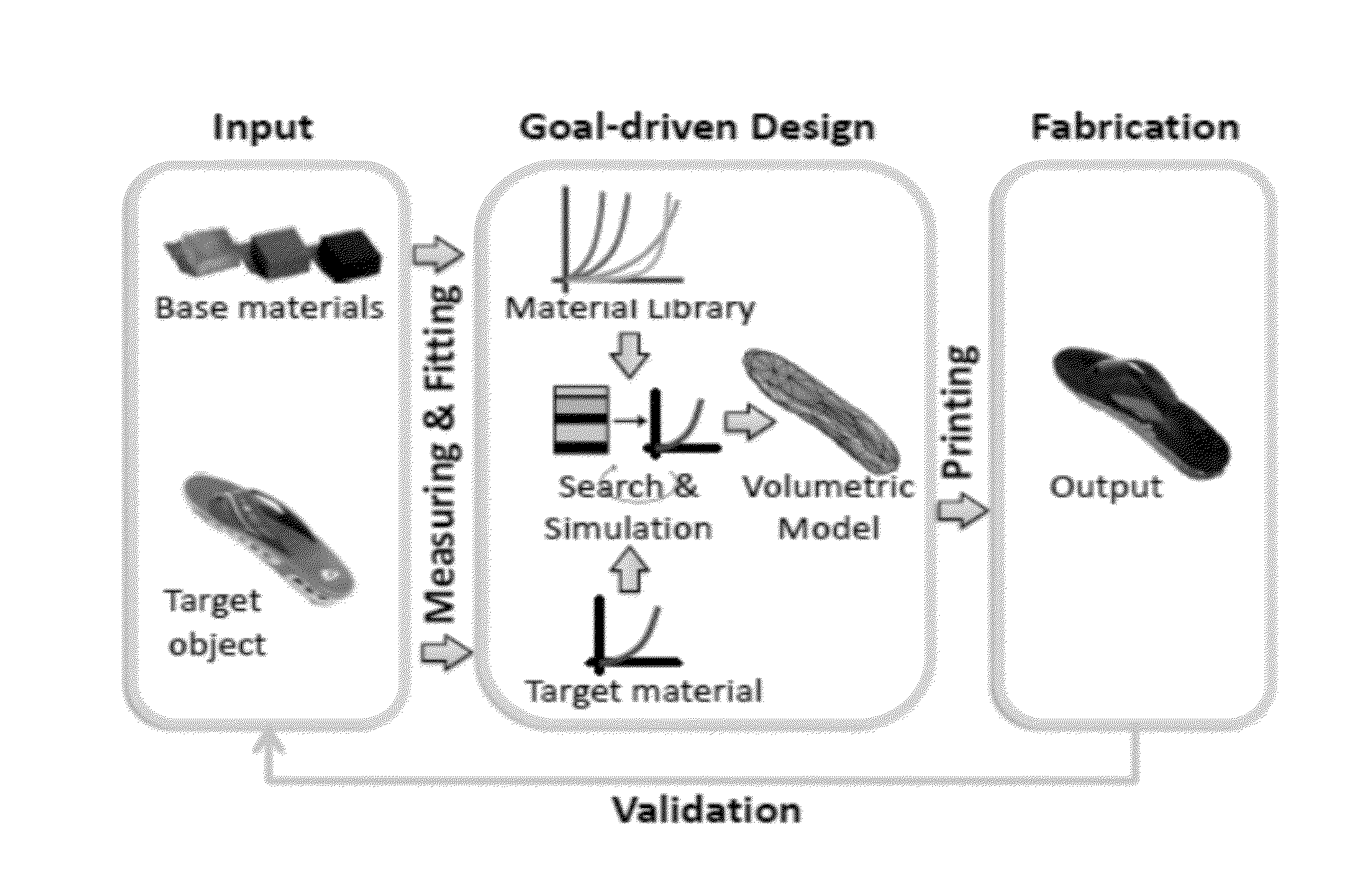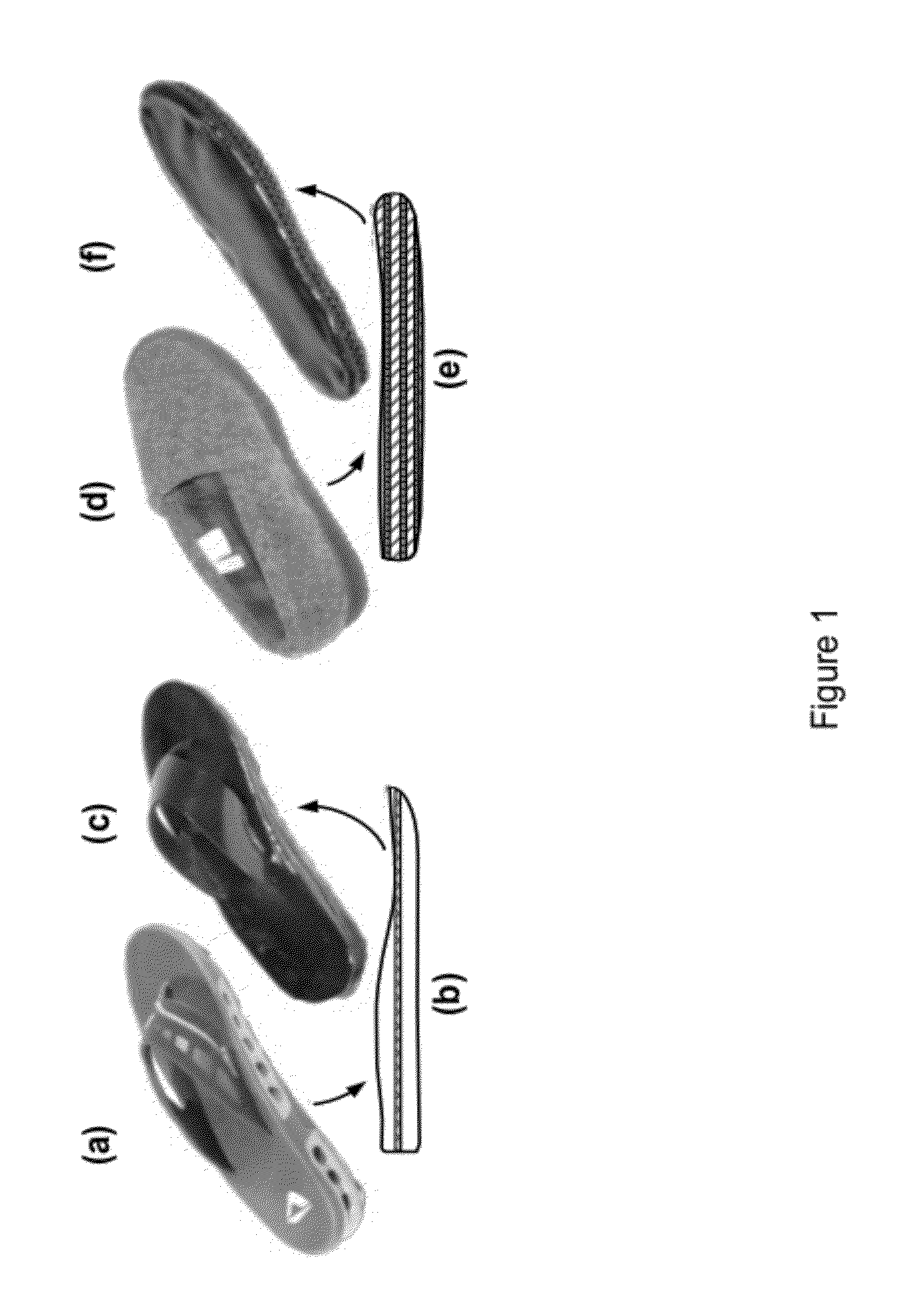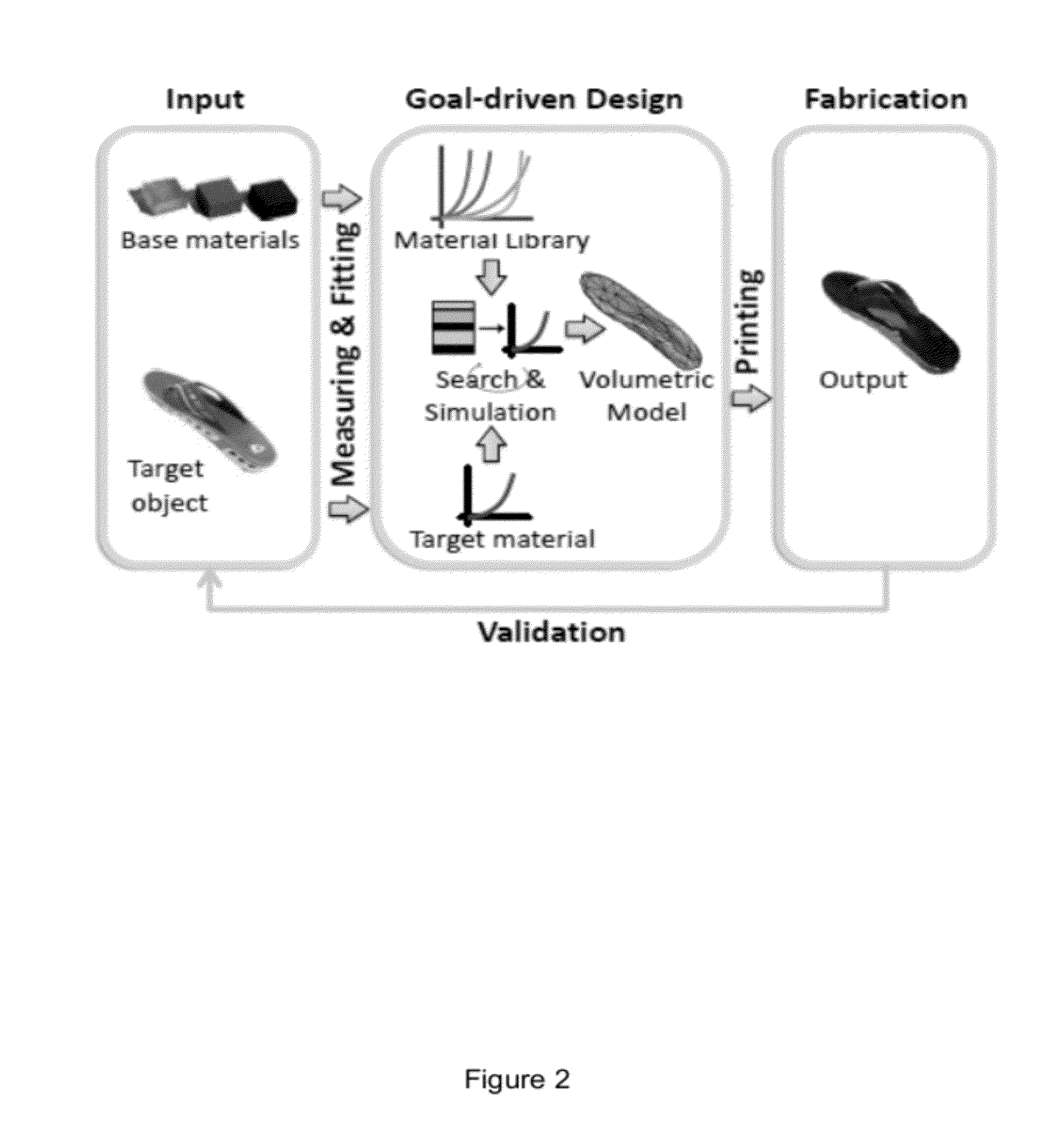Design and fabrication of materials with desired characteristics from base materials having determined characteristics
a technology of base materials and desired characteristics, applied in the field of object fabrication systems, can solve the problems of user's complex needs, collapse of objects' parts, and inability to completely free, and achieve the effect of simplifying the search process, easy input and understanding
- Summary
- Abstract
- Description
- Claims
- Application Information
AI Technical Summary
Benefits of technology
Problems solved by technology
Method used
Image
Examples
example hardware
for Computational System
[0150]FIG. 15 illustrates an example system 100 for performing computations described herein. A person of ordinary skill in the art, after reading this disclosure, should be able to configure and / or program a computer to perform various calculations and operations as described herein without undue experimentation.
[0151]In the example shown, computer system 100 typically includes a monitor 110, computer 120, a keyboard 130, a user input device 140, computer interfaces 150, and the like. In some cases, the operations are entirely automated and some I / O devices are not needed. In some embodiments, the computation process is built into the same computer as the measurement process and can be directly coupled, via wires or wirelessly, to mechanical elements, such as robot arms, that are part of the measurement process, and to a printer, in order to print the objects per the computation output.
[0152]In various embodiments, display / monitor 110 (if used) may be embodi...
PUM
| Property | Measurement | Unit |
|---|---|---|
| physical | aaaaa | aaaaa |
| physical properties | aaaaa | aaaaa |
| density | aaaaa | aaaaa |
Abstract
Description
Claims
Application Information
 Login to View More
Login to View More - R&D
- Intellectual Property
- Life Sciences
- Materials
- Tech Scout
- Unparalleled Data Quality
- Higher Quality Content
- 60% Fewer Hallucinations
Browse by: Latest US Patents, China's latest patents, Technical Efficacy Thesaurus, Application Domain, Technology Topic, Popular Technical Reports.
© 2025 PatSnap. All rights reserved.Legal|Privacy policy|Modern Slavery Act Transparency Statement|Sitemap|About US| Contact US: help@patsnap.com



